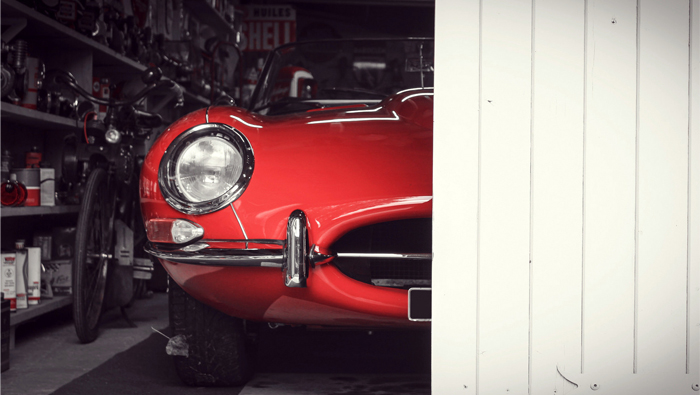
A number of times people need to store their vehicle for an extended period of time. Maybe you are going out on a long vacation with your loved ones, or perhaps you have a convertible that you love to drive only during the cooler part of the year, or you might be leaving the country for studies or job abroad.
Whatever the reason for your time away from your beautiful ride, you will need to store it properly if you want to retain its beauty and charm. Simply letting your vehicle sit in the garage on the street under the tree shade for long durations could mean a dead battery, rotten paint, or worse yet – a damaged engine, worn tyres and a rat colony under your hood.
Here is a list of essentials you need to carry out to store your vehicle optimally. Rest assured, your car will start hassle free when you return.
Keep it Covered
A garage is the ideal place to store a vehicle long term. This will protect it from the elements and keep it at a temperature that’s relatively stable. If you don’t have a garage, park it at your friend’s. If at all you have to leave the car outdoors, cover the car properly with a weatherproof car cover. This will help keep the car clean and dry.
Clean it Up
Though it may seem counterintuitive to get the car washed before being put away for months; it should not be overlooked. Water stains or bird droppings left on the car can damage the paint. Make sure to clean the wheels and undersides of the fenders to get rid of mud, grease or tar. For added protection, give the car a coat of wax.
Change the Oil
Go for an engine oil change if the vehicle is to be stored for over a month. Used engine oil has contaminants that could damage the engine if left idle in the engine for long durations.
Top Off the Tank
Fill the fuel tank to full. This will prevent moisture from accumulating inside the fuel tank and keep the seals from drying out. Also add fuel stabiliser to prevent ethanol buildup and protect the engine from gum, varnish, and rust. The fuel stabiliser will prevent the fuel from deteriorating for up to 12 months.
Keep it Charged
An unattended battery will eventually lose its charge. If possible, get someone to start the car every two weeks and drive it or leave the engine running for about 15 minutes. Driving the car periodically will maintain the battery’s charge, and keep the engine and other components properly lubricated. Also run the air-conditioner to keep the parts in working order and the air quality fresh.
You could also instal a battery tender, also known as a trickle charger, which hooks up to the car battery on one end and plugs into a wall outlet on the other. It delivers just enough electrical power to prevent the battery from discharging. Disconnecting the battery could also work, but you will end up losing all the presets and saved settings of your car.
Disengage the Parking Brake
While generally you should always engage the parking brake while parking, avoid doing so while storing your car. Prolonged active parking brake may lead the brake pads to stick to the rotors, thus damaging both. Instead employ a tyre stopper, also called a chock, to prevent the car from moving.
Wrap the Wiper Blades
Wrap the wiper blades with plastic wrap to prevent the rubber from sticking to the glass, or better yet, remove the blades completely and store them in a warm place. Be sure to pad the ends of the wiper arms, which can scratch the glass. If your car has the windshield wiper arms that pop out and away from the windshield, you can store them in the “out” position wrapped with cling film.
Prevent Flat Spots
Make sure the tyres are inflated to the recommended tyre pressure. If a vehicle is left stationary for too long, the tyres could develop flat spots as the weight of the vehicle presses down on the tyres’ footprints. This process occurs at a faster rate in colder temperatures and on vehicles equipped with performance tyres or low-profile tyres. The damage could be permanent. Get someone to drive the car for a few minutes every week or so. If not, then place jack stands on all four corners of the car, so that the weight falls on them and not the tyres.
Keep Critters Out
A stored car is a preferred home for rodents; the car being dry and relatively warm, having enough crevices and openings for them to hide and enough stuff to chew on. Cover any gaps and openings from where a rodent might enter, such as the exhaust pipe or an air intake. Steel wool works well for this. Spread mothballs (naphthalene balls) or cotton swabs dipped in peppermint oil along the perimeter of the vehicle. The smell drives mice away. You could also lay down a few mousetraps and some rat poison.
Place a note to yourself on the steering wheel outlining which optional steps above you carried out (rag in exhaust, rag in intake, carpets removed, battery removed).
Back in Action
When back, check under the hood for any evidence of rodents. Look for chewed belts, hoses, wires or nests. Check and undo/redo all the optional steps you carried out. Check tyre pressure and inflate the tyres to the recommended specs. Check the brakes. Rust may have accumulated on the rotors. In most cases, this should go away after you drive the vehicle for a short time.
Check fluids to make sure there have been no leaks and that they are at the recommended levels. Finally wash your vehicle to remove any dirt that may have accumulated. And there you are, ready to go once again. Ride safe.